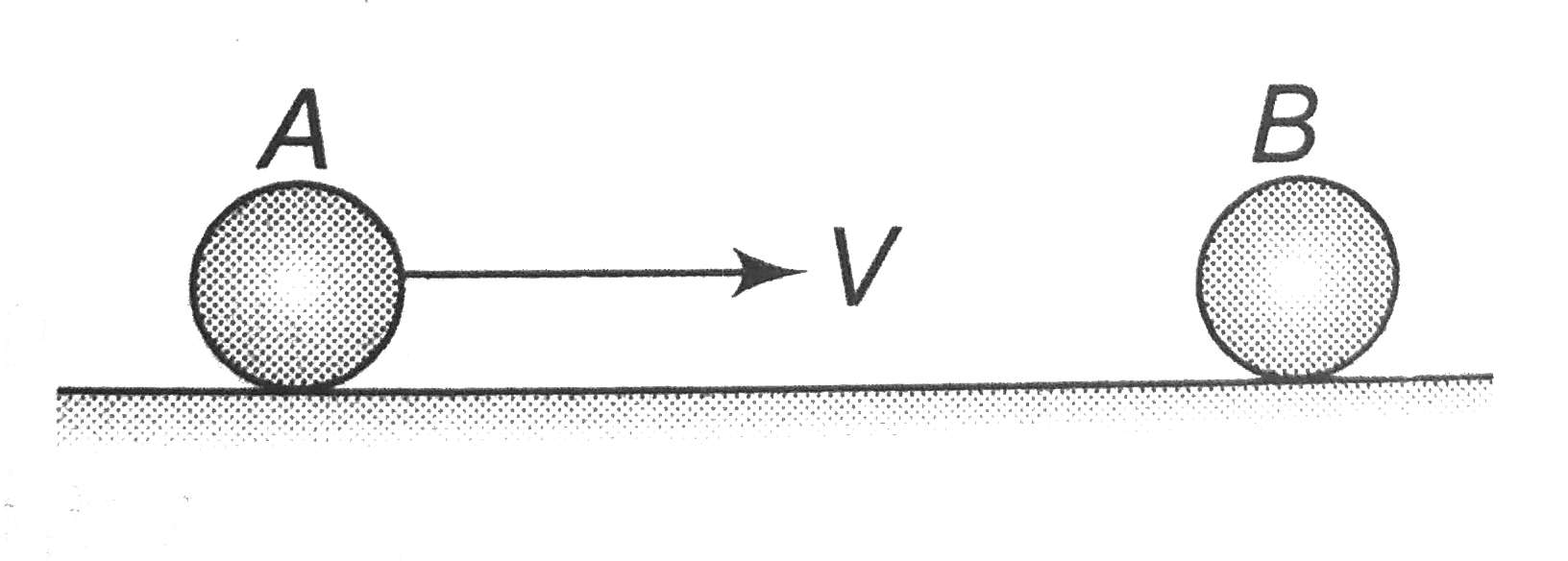Two small spheres are attached to the ends of a long light nonconducting rod at a distance 40 mm from each other. All three spheres are nonconducting, have identical masses m=1g, and a positive charge q=1C is distributed evenly on the surface of each sphere. The whole system is placed on a horizontal frictionless nonconducting surface. Initially, all three spheres are at rest and the middle sphere is located a distance 30 mm from one of the ends of the rod and a distance 10 mm from the other. Find the maximum speed v (∈ms−1) of the middle sphere after the system is released.


Since the charge is evely distributed, the charges can be treated as point charges. Looking at the "believe" and "after" pictures and taking right as positive and left as negative, conservation of momentum gives ∑→Pb=∑→Pa
0=2mv2−mv1,which gives v2=V1/2
The maximum velocity of the middle charge will occur when the middle charge is at the middle. Beyond the middle point, there will be a net force to the right that will tend to slow the charge down. The situation will be the same for the middle charge even if the two end charges are moving. Applying the law of conservation of energy to the system and using the middle charge position of maximum velocity as the "after" position, one gets Eb=Ea
PEb=KE+PEa
or kq23d+kq2d=12mv21+12(2m)v22+2kq22d
Now using the conservation of momentum result above for v2 and simplifying, we get
or kq23d=12mv21+mv214=3mv214
Finally solving for the maximum velocity
v1=2q3√kmd=20ms−1
Topper's Solved these Questions
- MISCELLANEOUS VOLUME 3Book:CENGAGE PHYSICSChapter:MISCELLANEOUS VOLUME 3Exercise:Fill in the blanks
Explore 10 Videos
- MISCELLANEOUS VOLUME 3Book:CENGAGE PHYSICSChapter:MISCELLANEOUS VOLUME 3Exercise:True and False Type
Explore 5 Videos
- MISCELLANEOUS VOLUME 3Book:CENGAGE PHYSICSChapter:MISCELLANEOUS VOLUME 3Exercise:Comprehension Type
Explore 94 Videos
- MECHANICAL PROPERTIES OF SOLIDSBook:CENGAGE PHYSICSChapter:MECHANICAL PROPERTIES OF SOLIDSExercise:Question Bank
Explore 4 Videos
- MISCELLANEOUS VOLUME 5Book:CENGAGE PHYSICSChapter:MISCELLANEOUS VOLUME 5Exercise:Integer
Explore 12 Videos
Similar Questions
Three identical spheres each of radius 'R' are placed on a horizontal surface touching one another. If one of the spheres is removed, the shift in the centre of mass of the system is.
View SolutionThree identical spheres each of radius .R. are placed on a horizontal surface touching one another. If one of the spheres is removed, the shift in the centre of mass of the system is
View Solution
Knowledge Check
The sphere A of mass m1 moves with velocity V on a frictionless horizontal surface and strikes with sphere B of mass m2 at rest. The sphere A comes back with speed V/10. Choose the correct option.
 Am1>m2Bm1=m2Cm1<m2Dnone of these
Am1>m2Bm1=m2Cm1<m2Dnone of theseThere is a cubical cavity inside a conducting sphere of radius R. A positive point charge Q is placed at the centre of the cube and another positive charge q is placed at a distance 1(>R) from the centre of the sphere. The sphere is earthed

Net charge on the outer surface of conducting sphere isA+QBQ−qR/1C−qR/IDnoneIf 64 identical small spheres are made out of a big sphere of diameter 8 cm, what is surface area of each small sphere?
Ancm2B2ncm2C4itcm2D8ticm2
Three identical spheres each of radius 3cm are placed on a horizontal surface touching one another. The distance of centre of mass of system from any centre of the sphere is
View SolutionTwo small spheres, each having a mass of 20 g, are suspended form a common point by two insulating strings of length 40 cm each. The spheres are identically charged and the speration between the balls at equilibrium is found to be 4 cm . Find the charge on each sphere.
View SolutionTwo small spheres, each having a mass of 20 g, are suspended form a common point by two insulating strings of length 40 cm each. The spheres are identically charged and the speration between the balls at equilibrium is found to be 4 cm . Find the charge on each sphere.
View SolutionA charge q is to be distributed on two conducting spheres. What should be the value of the charges on the spheres so that the repulsive force between them is maximum when they are placed at a fixed distance from each other in air ?
View SolutionA charge q is to be distributed on two conducting spheres. What should be the value of the charges on the spheres so that the repulsive force between them is maximum when they are placed at a fixed distance from each other in air ?
View Solution
